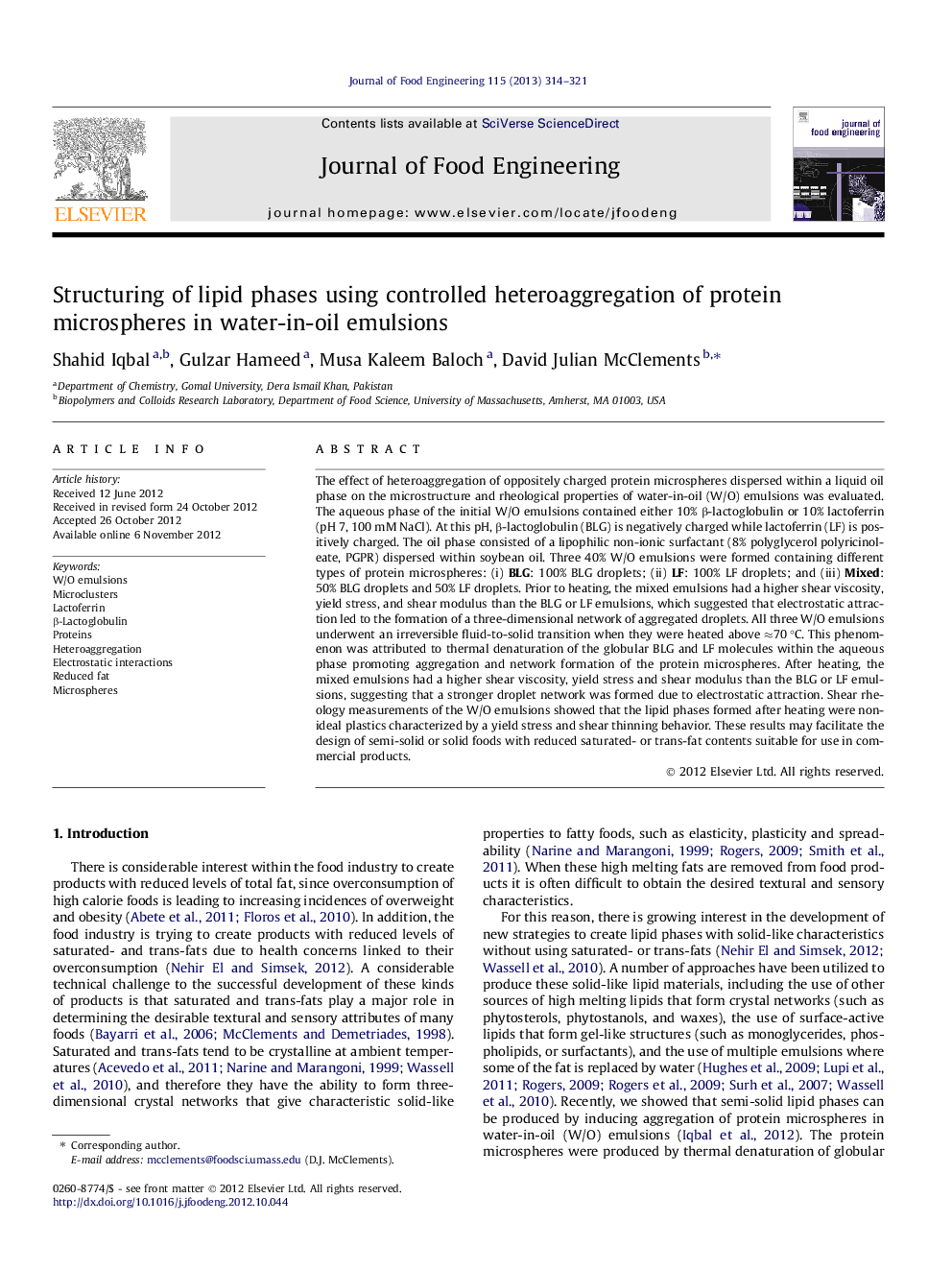| Article ID | Journal | Published Year | Pages | File Type |
|---|---|---|---|---|
| 223552 | Journal of Food Engineering | 2013 | 8 Pages |
The effect of heteroaggregation of oppositely charged protein microspheres dispersed within a liquid oil phase on the microstructure and rheological properties of water-in-oil (W/O) emulsions was evaluated. The aqueous phase of the initial W/O emulsions contained either 10% β-lactoglobulin or 10% lactoferrin (pH 7, 100 mM NaCl). At this pH, β-lactoglobulin (BLG) is negatively charged while lactoferrin (LF) is positively charged. The oil phase consisted of a lipophilic non-ionic surfactant (8% polyglycerol polyricinoleate, PGPR) dispersed within soybean oil. Three 40% W/O emulsions were formed containing different types of protein microspheres: (i) BLG: 100% BLG droplets; (ii) LF: 100% LF droplets; and (iii) Mixed: 50% BLG droplets and 50% LF droplets. Prior to heating, the mixed emulsions had a higher shear viscosity, yield stress, and shear modulus than the BLG or LF emulsions, which suggested that electrostatic attraction led to the formation of a three-dimensional network of aggregated droplets. All three W/O emulsions underwent an irreversible fluid-to-solid transition when they were heated above ≈70 °C. This phenomenon was attributed to thermal denaturation of the globular BLG and LF molecules within the aqueous phase promoting aggregation and network formation of the protein microspheres. After heating, the mixed emulsions had a higher shear viscosity, yield stress and shear modulus than the BLG or LF emulsions, suggesting that a stronger droplet network was formed due to electrostatic attraction. Shear rheology measurements of the W/O emulsions showed that the lipid phases formed after heating were non-ideal plastics characterized by a yield stress and shear thinning behavior. These results may facilitate the design of semi-solid or solid foods with reduced saturated- or trans-fat contents suitable for use in commercial products.
► Semi-solid lipids were formed by heteroaggregation of protein microspheres in oil. ► Heteroaggregation induced by mixing two different W/O emulsions. ► The structured lipids formed have low saturated and trans-fat contents. ► These structured lipids may be useful for commercial applications.
